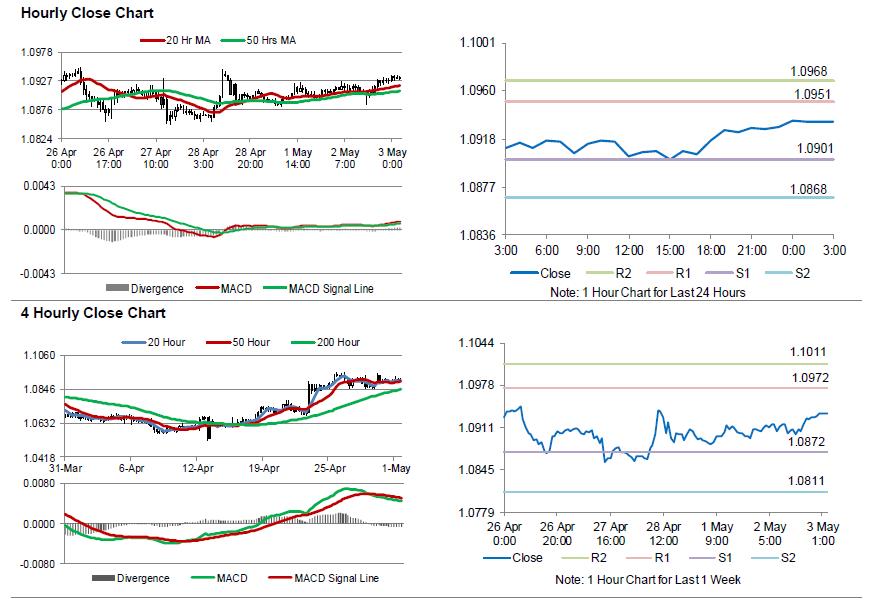For the 24 hours to 23:00 GMT, the EUR rose 0.18% against the USD and closed at 1.0929, after growth in the Euro-zone’s manufacturing sector was confirmed at a six-year high level of 56.7 in April. However, the PMI was revised slightly lower from a preliminary print of 56.8. In the previous month, the PMI had registered a level of 56.2. Meanwhile, the region’s unemployment rate surprisingly remained steady at an eight-year low level of 9.5% in March, against market expectation for a fall to a level of 9.4%.
Separately, Germany’s final Markit manufacturing PMI eased to a level of 58.2 in April, confirming the flash estimates. In the previous month, the PMI had registered a reading of 58.3.
In the Asian session, at GMT0300, the pair is trading at 1.0933, with the EUR trading a tad higher against the USD from yesterday’s close.
The pair is expected to find support at 1.0901, and a fall through could take it to the next support level of 1.0868. The pair is expected to find its first resistance at 1.0951, and a rise through could take it to the next resistance level of 1.0968.
Moving ahead, market participants will draw their attention to the Euro-zone’s 1Q GDP figures and Germany’s unemployment rate data for April, scheduled to release in a few hours. Later today, all eyes would be on the release of the latest Federal Reserve monetary policy meeting, wherein investors would be keen to get hints on the timing of the next interest rate hike. Additionally, in the US, ADP’s jobs report, ISM non-manufacturing PMI and final Markit services PMI, all for April, will keep investors on their toes.
The currency pair is trading above its 20 Hr and 50 Hr moving averages.

